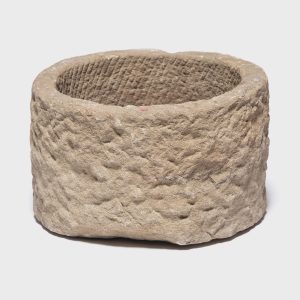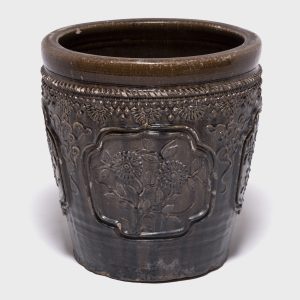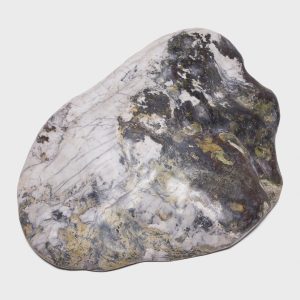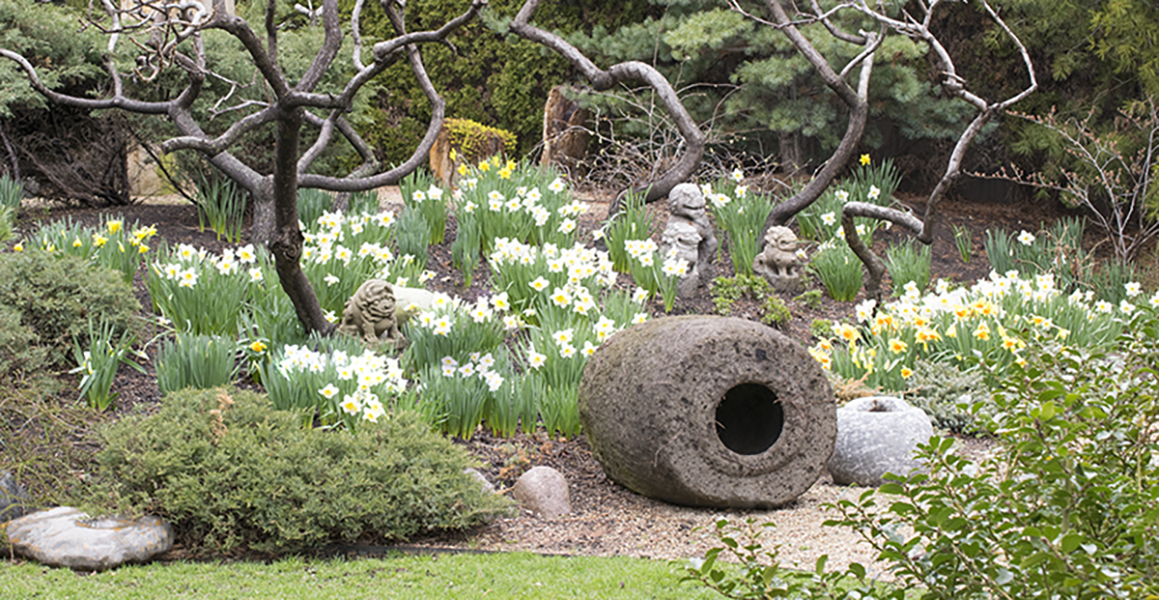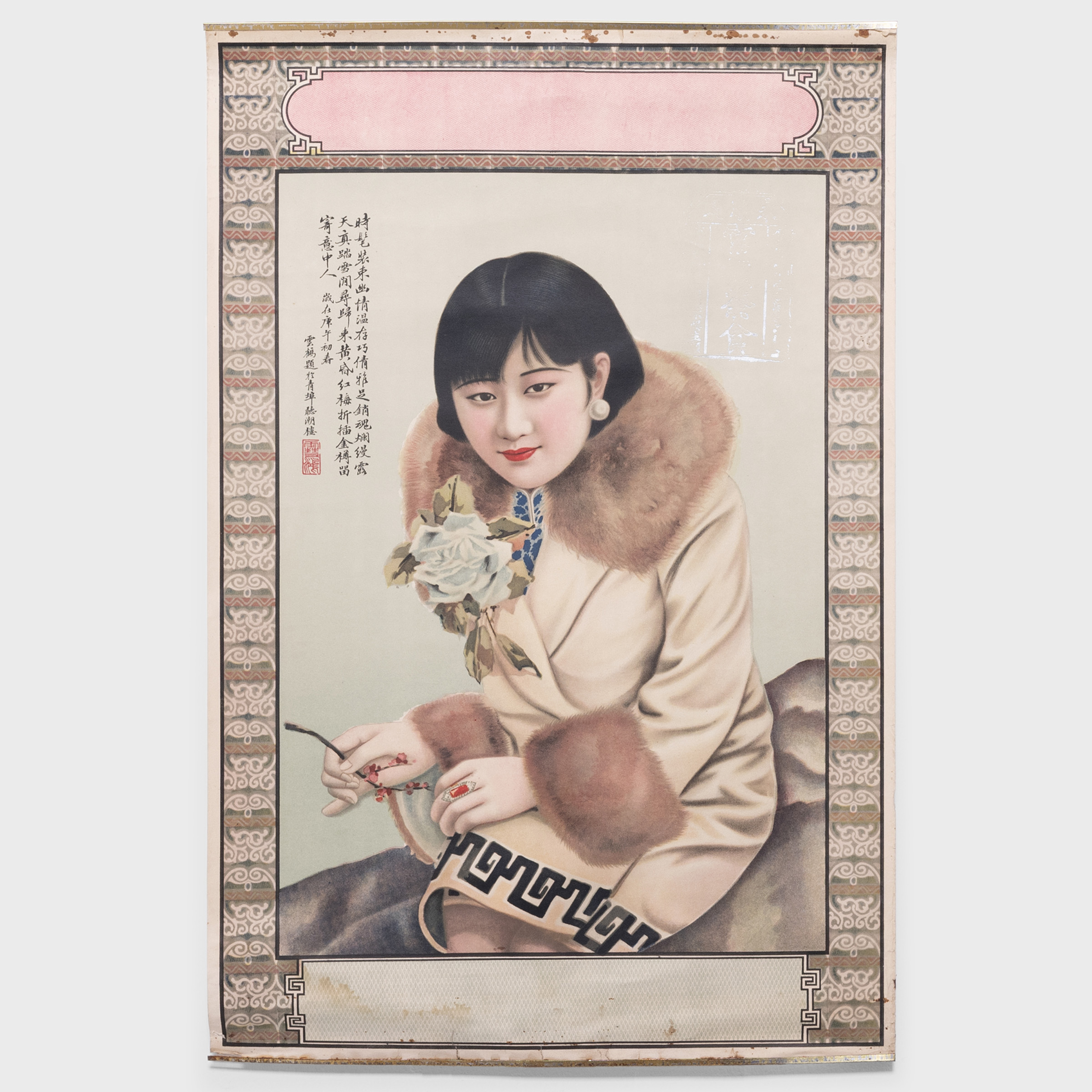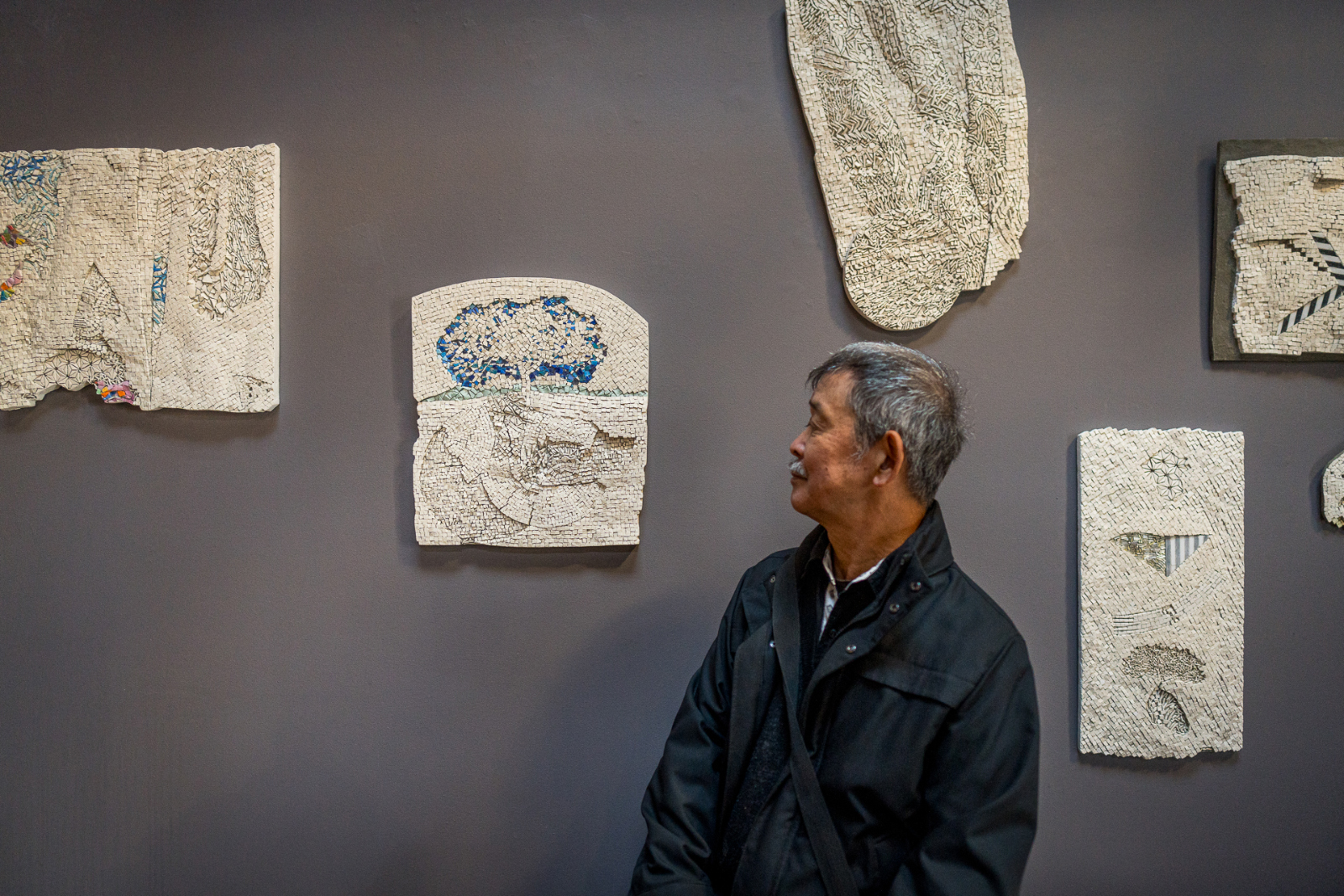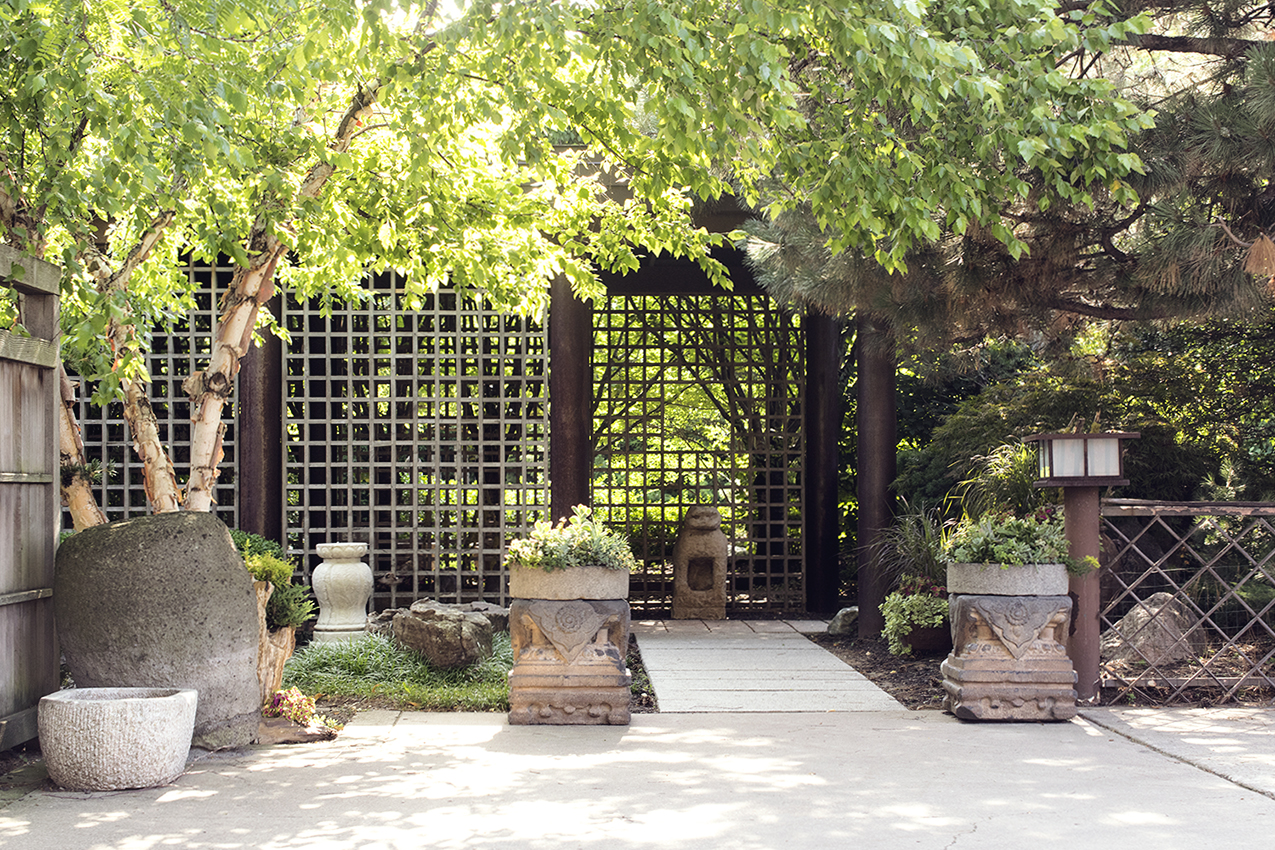
Chinese Gardens: The Heart of the Home
Courtyard gardens are the literal and figural heart of the Chinese home. In a classical house, the main rooms open into a private garden that not only fills the home with sunlight but also serves as a space for contemplation and meditation. These natural spaces are often referred to as “scholars gardens,” used by artists and philosophers to seek spiritual shelter. Both modern and classical Chinese gardens are influenced by Confucian and Taoist philosophies—particularly the belief that balance can be achieved through the coupling of opposites. Within the garden, a microcosm of the larger universe can be unearthed within four major elements: water, stone, plants, and architecture. Learn how to create a garden that embodies these traditional design elements in a modern way.
Water
The lifeblood of the world, water fills the streams and rivers that compose the earth’s arteries. Water carries the feminine energy of yin—soft and yielding, yet capable of overcoming hard stone. In the garden, water also introduces the element of reflective light. Water features need not be large or ornate—in Chinese garden design, a pond can be as simple as a pot or trough filled with water and floating flowers. Ponds combine the dual concepts of emptiness and fullness—they mirror the clear, empty sky but are also “filled” with everything they reflect.
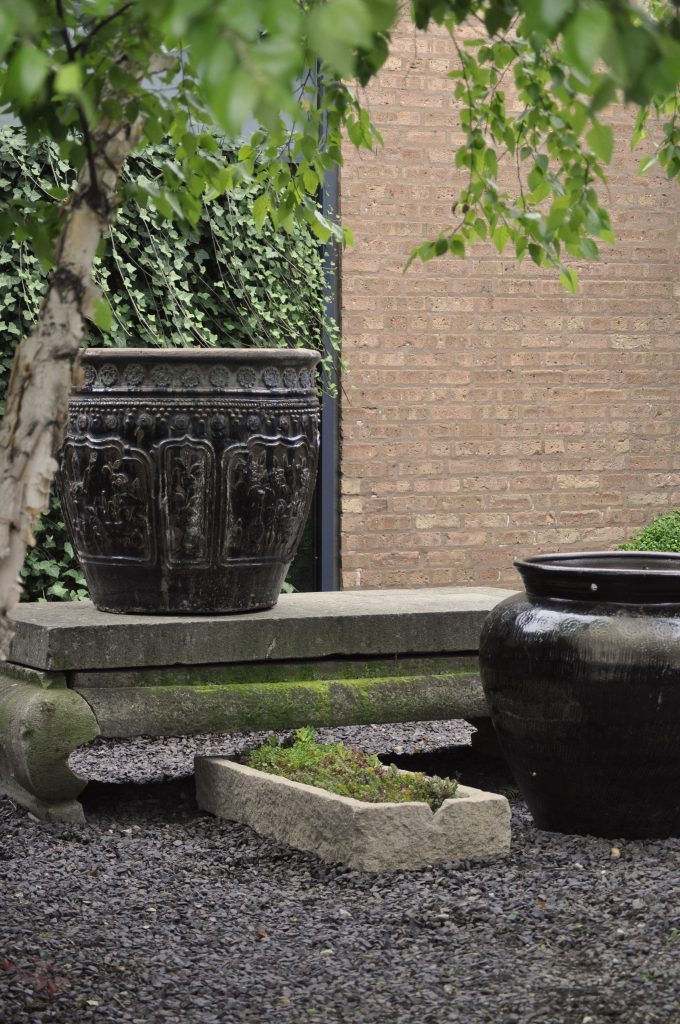
Stone Troughs and Ceramic Vessels in the PAGODA RED Garden.
Tip: Create a pond in a pot, filling a stone trough or large ceramic vessel with water and floating plants, such as lotuses or water lilies. Install an aerator or bubbler to help keep the water clean and moving.
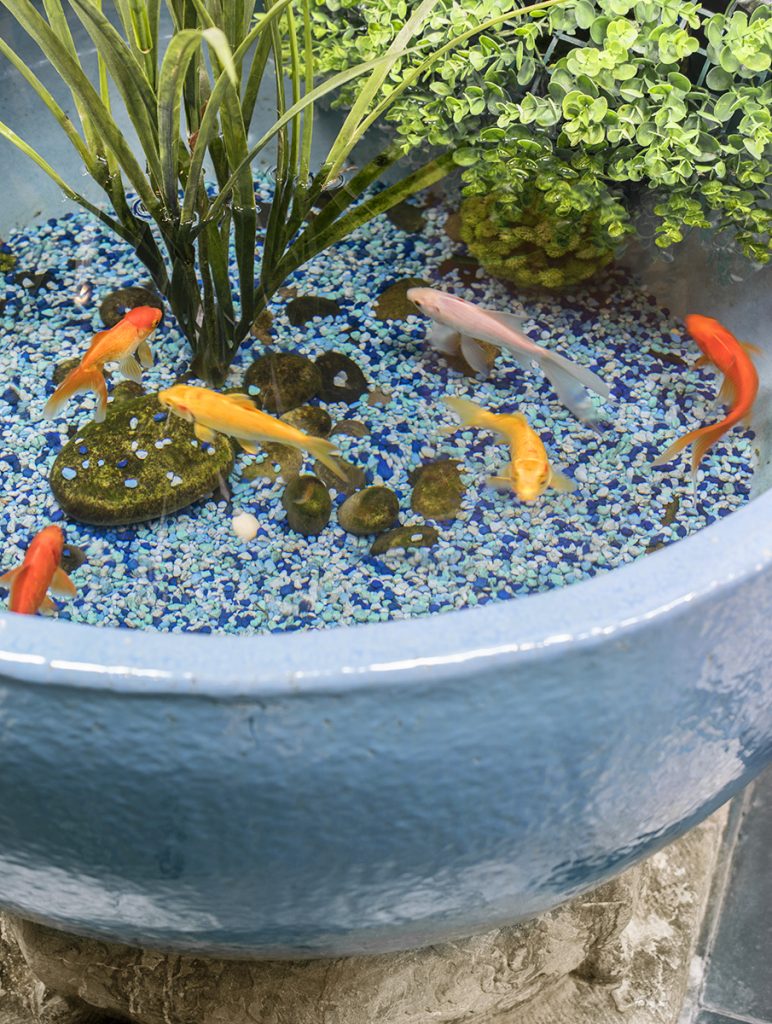
Monumental Cloud Glazed Fish Pond in the PAGODA RED Gallery.
Stone
Stone is the yang to water’s yin. Symbolic of longevity, stone makes up the skeleton of the earth. Since the Ming dynasty (1368-1644), specially placed stones have been an integral part of Chinese garden design. Beautifully shaped rocks—such as twisting Taihu stones or ancient Zhenzhu stones—are given honored placement. Stones are also functional, used to mark paths, separate space, and create shorelines around ponds.
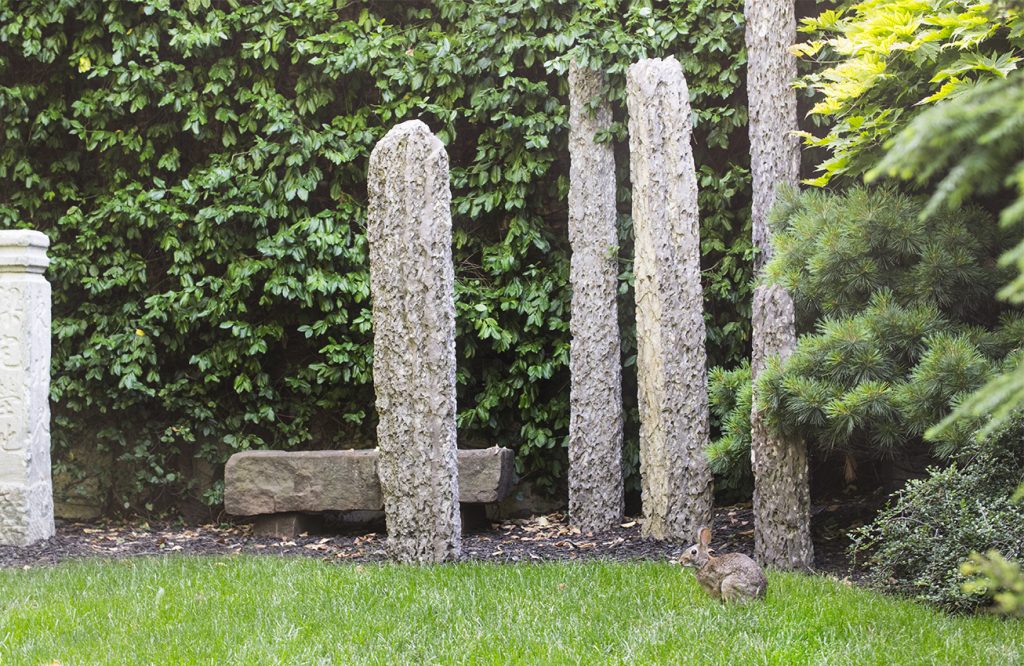
Taihu Stones in the PAGODA RED Garden.
Tip: You can use Taihu stones to border a path, retain an area or create a sculptural installation. They’re especially easy to install when used horizontally to edge a garden path.
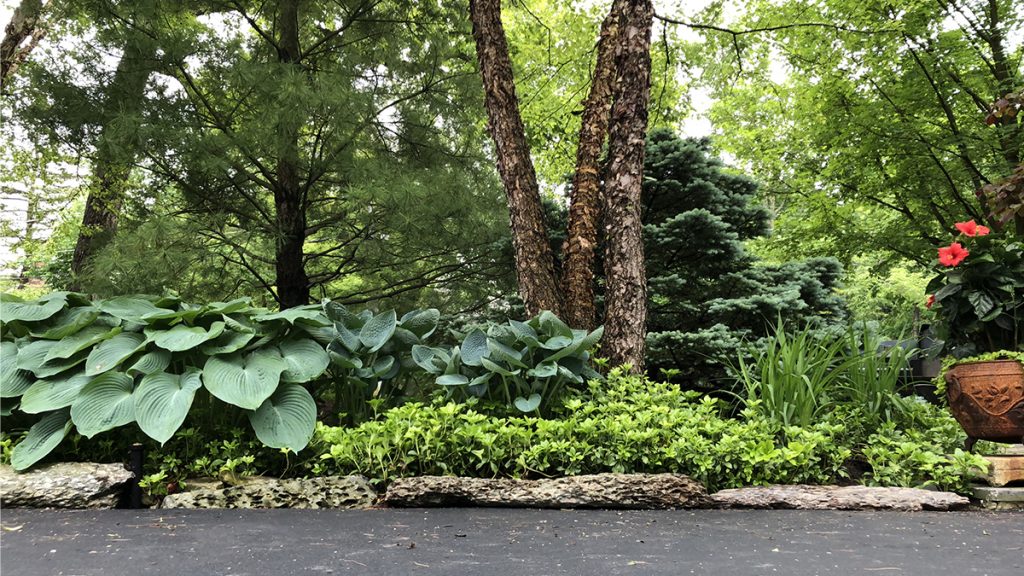
Taihu Stones lining a North Shore driveway.
Plants
Plants are chosen not only for their beauty but also for their poetic and symbolic properties. Because plants represent vitality, the garden must support living species throughout all four seasons. Pine, bamboo, and plum trees are the “three friends of winter,” plants that survive the whole year, representing longevity and resilience.
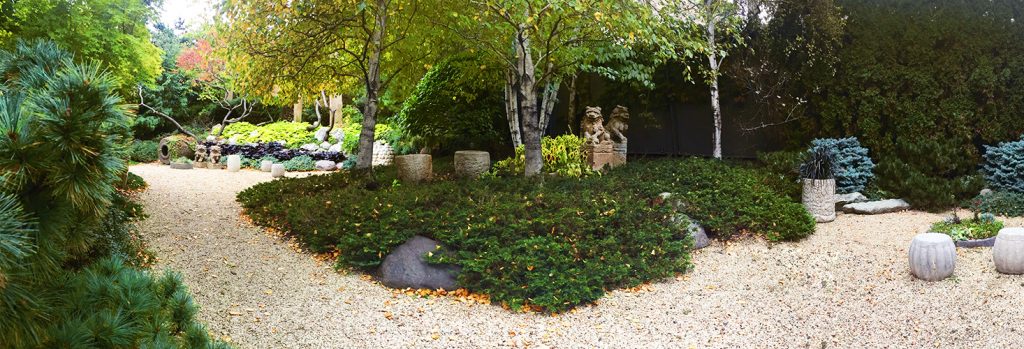
The PAGODA RED Garden.
Spring flowers are chosen for their splendor. The “three famous flowers”—azalea, primrose, and gentian—cover the mountain slopes of southwest China during the flowering season. Daffodils and narcissus bring prosperity and good fortune, while chrysanthemums—once used for medicinal purposes—represent the “courage to make sacrifices for a natural life.” The lotus, an emblem of enlightenment, is particularly important in Chinese gardens. Its pure petals rise out of muddy water, symbolic of the soul that emerges from darkness into light.
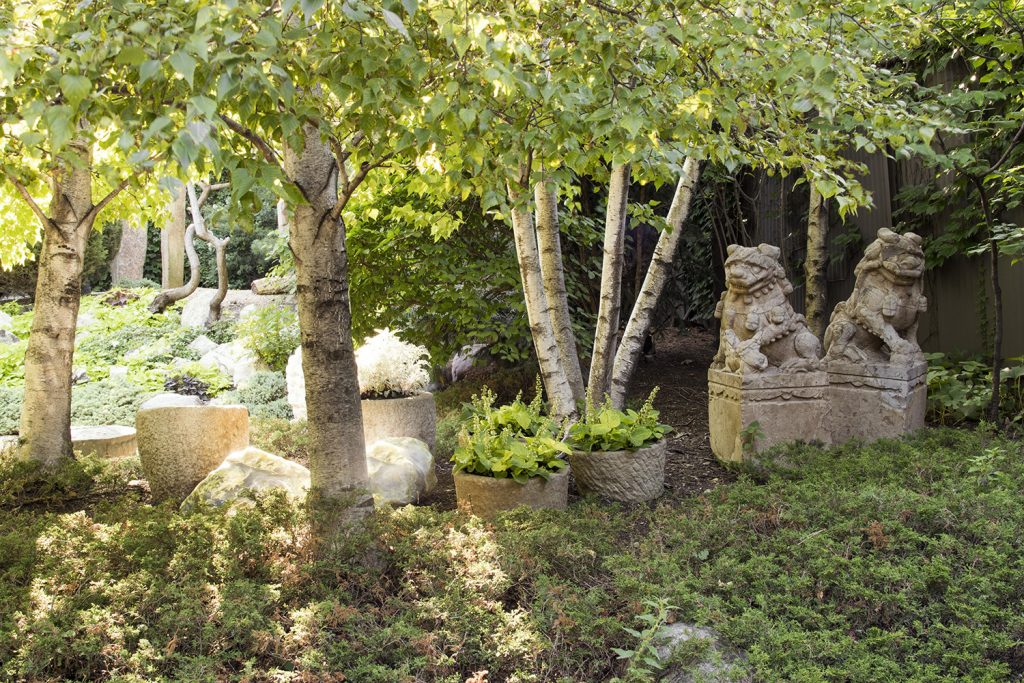
Stone Mortars in the PAGODA RED Garden.
Tip: Many common garden plants come with beautiful symbolism. Plant daffodils and peonies to bring good luck in the spring, lotus flowers to bring enlightenment in summer, and chrysanthemums to bring longevity in fall.
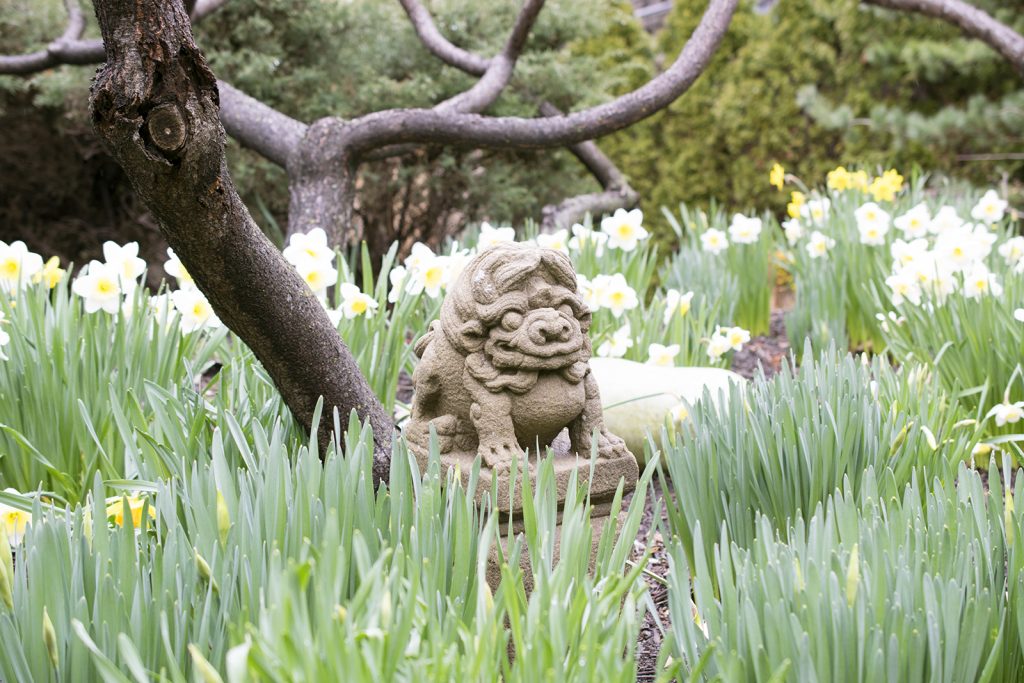
The PAGODA RED Garden.
Architecture
Architecture represents the presence of human beings in the natural world. Pavilions, bridges, patterned tiles, pagodas and gates are important elements of traditional gardens. In walled gardens, “empty” windows and doors often permeate manmade structures, framing views and revealing glimpses of the landscape to those outside the garden. Lattice screens also punctuate the windows of courtyard walls, weaving sunlight into intricate patterns.
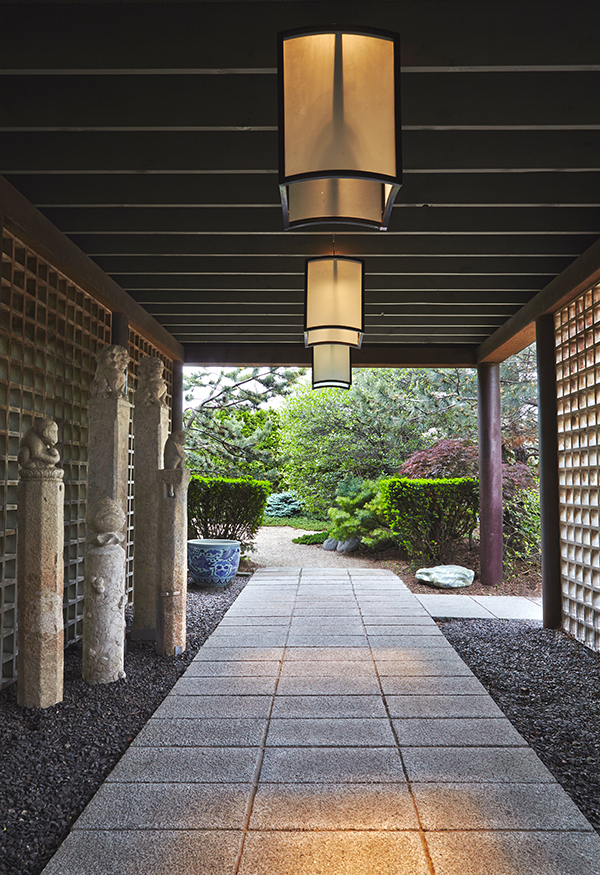
Lanterns hanging in the front entry of the PAGODA RED Gallery.
Tip: Vintage ceramic roof tiles have endless uses in a garden. Stack them to create privacy screens, or lay them on ground or gravel to create paths and edges.
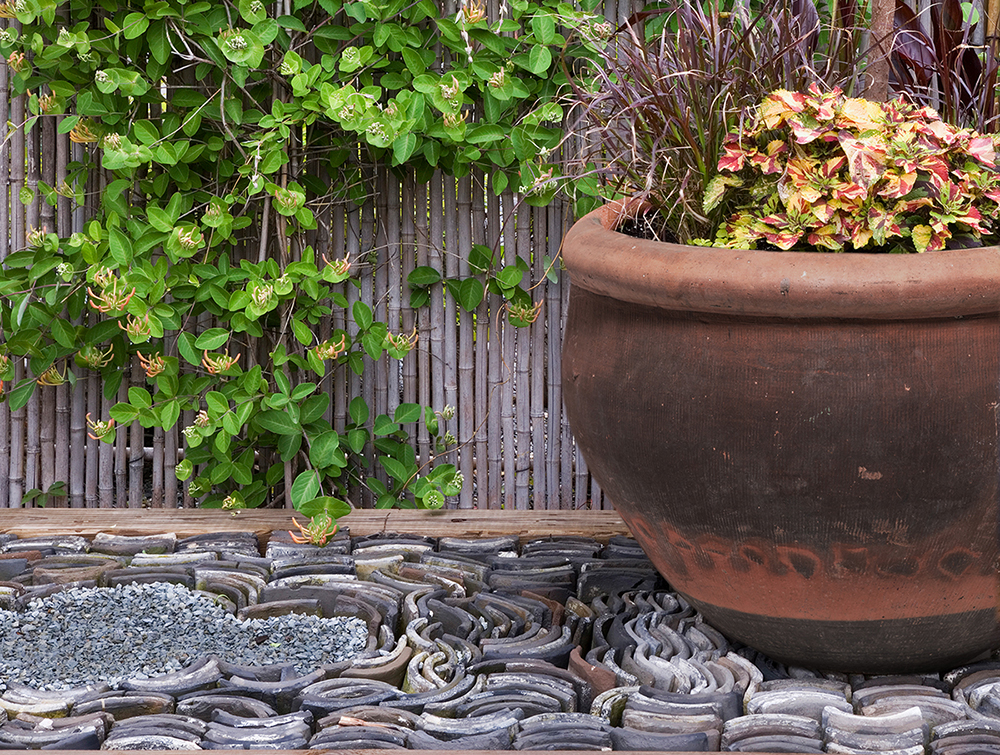
Roof Tiles in the PAGODA RED Garden.
Striving for harmony, Chinese garden design uses these four elements to unify contradictory but complimentary pairs. Untamed plants invigorate ordered flowerbeds; crooked paths merge into straight ones; hard yang blends with soft yin. Timeless details woven into the fabric of ancient tradition can inspire contemporary home gardens that serve as spaces for relaxation, contemplation, and meditation.
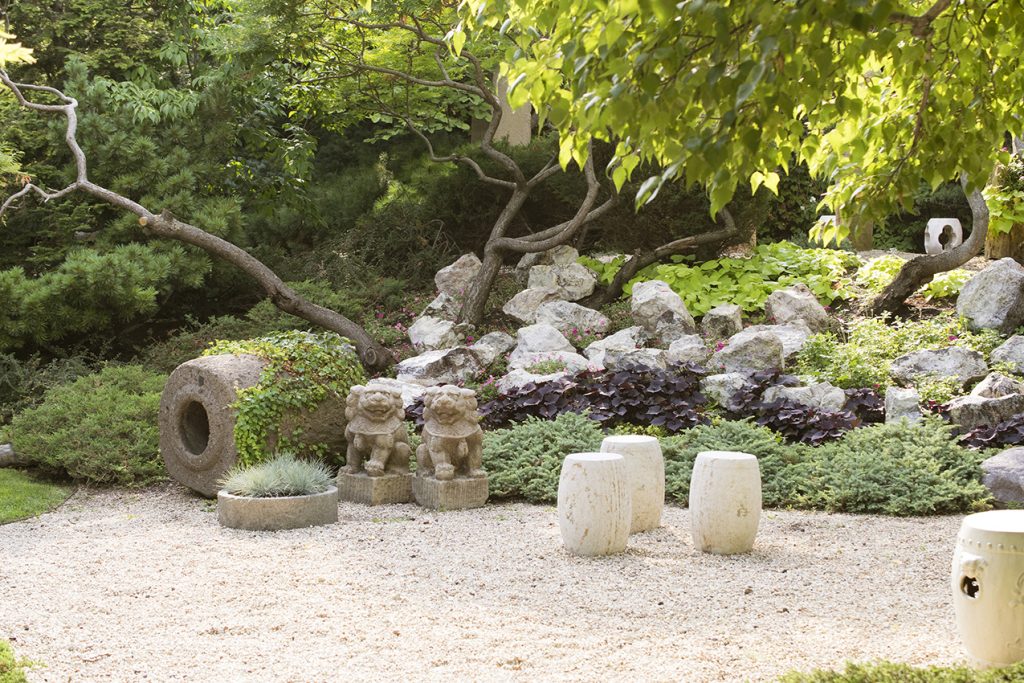
The PAGODA RED Garden.
Update: All photos featuring the PAGODA RED Garden were taken at our previous space in the West Loop, Chicago neighborhood. Our gallery is now located in the Bucktown neighborhood at 1740 W Webster Ave, Chicago IL 60614. Come visit us Tuesday to Saturday, 10am to 5pm.

Shop the Story
- Round Stone Basin
- Large Floral Relief Jar
- “Mountain Frost” Meditation Stone

Are you an architect or designer with a story to tell?
Register with us to receive exclusive discounts and benefits, plus free shipping on your first order. Trade professionals are also eligible for collaborative features on our blog and social media channels. Please note that trade registration with PAGODA RED is only open to interior design and architecture professionals.
